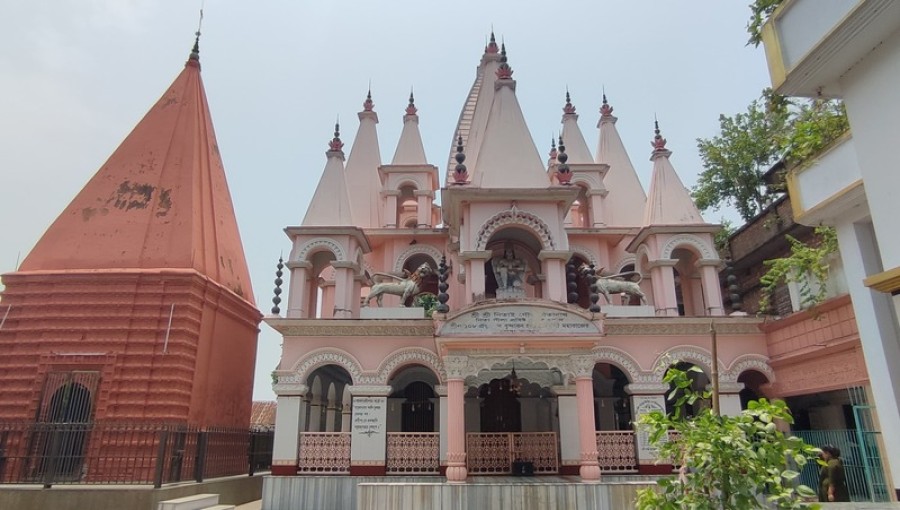
Photo: Voice7 News
The ancient Handial Jagannath Temple in Chatmohar upazila, Pabna, adorned with intricate terracotta sculptures, stands as a testament to Bangladesh's rich archaeological heritage. Photo: Voice7 News
The Handial Jagannath Temple in Pabna's Chatmohar upazila stands as a testament to Bangladesh's rich archaeological heritage. Nestled in the lush, green village of Handial, this ancient temple is not only an emblem of historical significance but also a marvel of architectural brilliance. Despite the passage of centuries, the temple's intricate terracotta sculptures and resilient structure continue to captivate visitors and historians alike, showcasing a blend of artistic and cultural legacy that defies the test of time.
Pabna June 12,(V7N)- Archaeological artifacts are invaluable assets of a nation. Every region of Bangladesh is home to such treasures, with their enduring architectural brilliance surpassing even modern archaeological craftsmanship.
One such historical and archaeological treasure is the Handial Jagannath Temple, located in the northern district of Pabna, specifically in Chatmohar upazila. The lush green village of Handial, situated 18 kilometers north of Chatmohar town, is home to this ancient temple, known locally as the Jagannath Temple.
Though the exact date of the temple's establishment is unknown, archaeologists believe it was built in the early 15th century, with some suggesting it was constructed in 1550. An inscription found on the temple indicates that Bhavani Prasad renovated it in 1590.
The temple is renowned for its terracotta sculptures. Despite centuries, its structure and design continue to rival modern architectural art. The temple’s walls and the high tower are adorned with extensive terracotta decorations. The structure, built with small bricks, stands approximately 25 hands high and measures 7 hands in both length and width.
The temple was last renovated by the Department of Archaeology in January 2010. It is believed that the idol in the temple was established by a Hindu weaver, and at one point, there were 175 bighas of land dedicated to its maintenance. However, this property is no longer associated with the temple. Another ancient temple nearby was destroyed in the earthquake of 1897-98.
An inscription in the temple mentions that the bathhouse temple was reconstructed in 1345 by Purnachandra Chakraborty with funds and efforts from devotees, inspired by Annadamayi Devi of Handial. Currently, the temple has no land of its own.
Annual rituals and festivals such as Pushparath, Snan Yatra, Boro Rath Yatra, and Ulto Rath are celebrated with funds from devotees. The biggest festival at the temple is the Rath Yatra, which attracts numerous devotees from far and wide. Recent improvements to the temple have been made possible through donations from devotees.
Inside the temple complex, there is a sacred Tamarind tree, adorned with colorful cloths tied by devotees, who believe that their wishes will be fulfilled. If a wish is granted, they tie a cloth to the tree.
The temple's maintenance and services are entirely funded by devotees, with Tapan Brahmachari currently in charge. During various festivals, devotees from distant places visit the temple for worship. Accommodations and meals are available for visitors.
END/V7N/SRP/DK/
.jpg)

.jpg)
Comment: